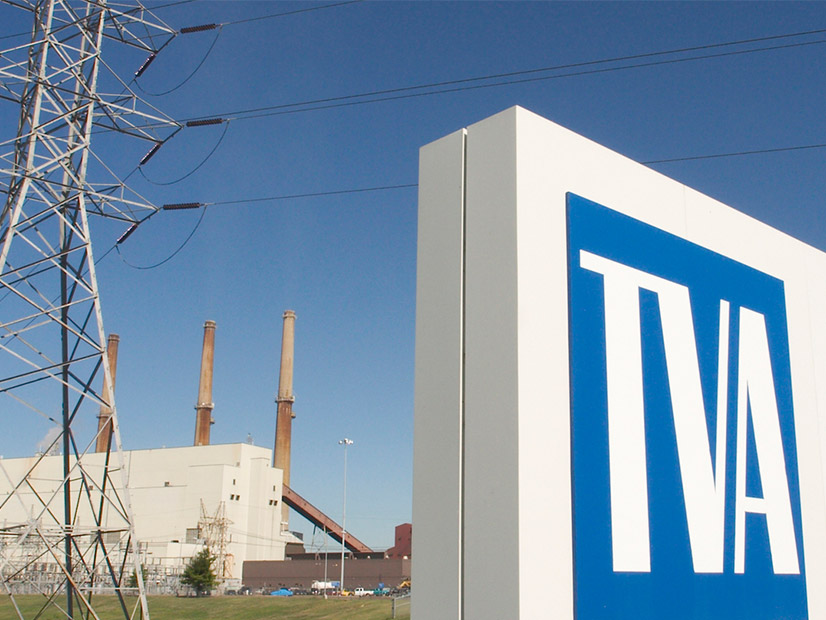Tennessee Valley Authority CEO Jeff Lyash last week hinted that the federal corporation could cease all coal use by 2035.
The near announcement came during the Atlantic Council’s Innovation and the Future of Energy webinar April 28, where Lyash appeared as a panelist.
“We’ve had to retire about 60% of our coal generation already, and our coal units will continue to retire over the next 15 years because they’ve reached the end of life for those facilities,” Lyash said.
Lyash said TVA will continue to help its coal-dependent workforce “gain new jobs skills and transition to new employment, hopefully with TVA.”
“We’ve been very successful with that,” he added.
He also said TVA will continue to repurpose plant sites as it winds down coal use. He pointed to the new gas generation units on the sites of the former Allen and Paradise coal plants in Tennessee and Kentucky, respectively. The shuttered Widows Creek site in Alabama has since attracted a Google data center and solar facilities, he added.
“We see our role as helping to make this energy transition while keeping prices low and reliability high, and helping to transition to this new energy economy for not only our employees but the communities we serve,” Lyash said.
TVA has not yet made a formal announcement, and utility representatives would not confirm a retirement timeline with RTO Insider.
The Southern Alliance for Clean Energy (SACE) said it expects a formal announcement this month, after the TVA board of directors’ meeting Wednesday. It said it “applauded” the unofficial decision.
“Which energy resources will replace the coal plants has not yet been clarified, and SACE calls on TVA leadership to immediately initiate and update their integrated resource plans and begin the proper procedures to follow the National Environmental Policy Act in order to accelerate the process of retiring coal and ensure their energy mix is compatible with the Biden administration’s call for a carbon-free electricity sector by 2035,” SACE wrote in a press release.
SACE said throughout 2019, TVA’s five active coal plants emitted over 26 million tons of carbon.
“As a federal agency and the nation’s largest public power provider, it’s incumbent on TVA to accelerate decarbonization of their power grid,” the group wrote. It pointed out that a 15-year span to retire coal plants is probably too late to meet the Biden administration’s goals, and “even if the agency fully retires coal, other sources of energy — such as fossil gas — are not carbon-free.”
“To be clear … there’s a big difference between being coal-free and being carbon-free, which is the ultimate goal,” SACE Director Stephen Smith said. “Retiring the coal plants is a major advancement that opens the door for TVA to utilize renewable energy resources such as solar systems, battery storage and energy efficiency programs, all of which mitigate the threats of climate change while creating millions of well paying union jobs, rebuilding our country’s infrastructure and fueling our much needed economic recovery.”
SACE has pressed TVA to operate an entirely carbon-free grid by 2030. (See Clean Energy Groups Press for Carbon-free TVA by 2030.)
Lyash said that by the end of last year, TVA had reduced greenhouse gas emissions 63% from 2005 levels. It has reductions goals of 70% by 2030 and 80% by 2035 with its existing technology and “without raising price,” Lyash said.
“We’re driving as hard as we can,” Lyash said. “But we cannot even attain those numbers unless we preserve and extend the life of our existing nuclear fleet.”
Lyash said that for TVA to “close the gap” from an 80% reduction to total carbon elimination, it must use a combination of energy storage, carbon-capture technologies and new small modular nuclear reactors.
“It’s the path to attain these objectives we’ve set out. … We need new low-carbon energy generation resources, and of course that means renewables: solar, wind, as much as the system can integrate; but there are limitations to that,” he said. “We need storage to help that integration, yes, but we need new nuclear in order to be able to not only close the gap but generate the energy that’s going to be demanded as we electrify the economy, including transportation.”
Memphis Light, Gas and Water, the largest of TVA’s 153 power company customers, has long pressed the federal utility for cheaper and cleaner energy. (See Memphis Moves Closer to Breaking from TVA.)
The municipal utility is currently under contract with Georgia-based GDS Associates, which will collect bids for alternative sources of energy for the city. Following bidding, the Memphis City Council will decide whether to pursue the bids and exit its 80-plus-year partnership with TVA.





